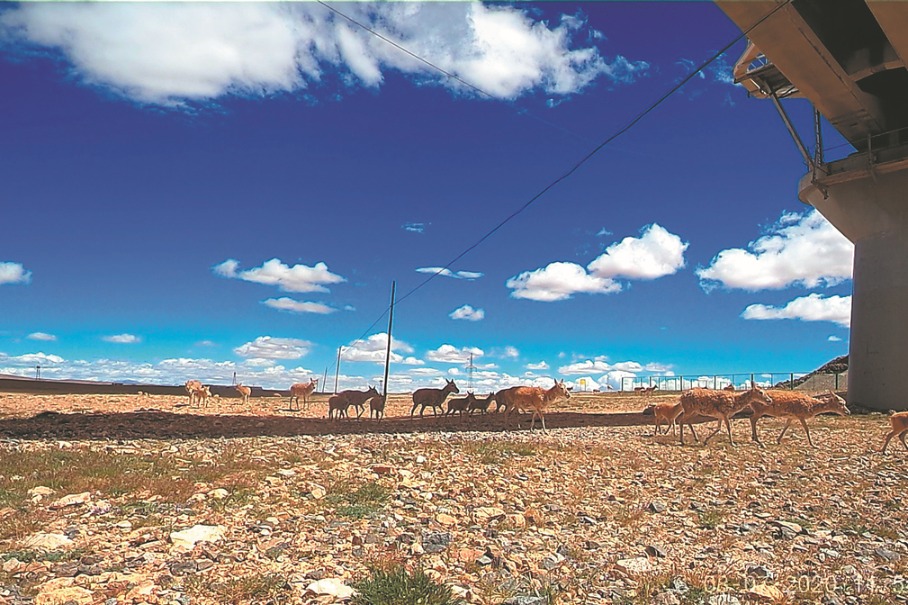China's economic performance resilient amid challenges


China's economy demonstrated a stable expansion in the first half of 2024, achieving a year-on-year GDP growth of 5 percent, equivalent to 61.68 trillion yuan ($8.5 trillion), according to data released by the National Bureau of Statistics (NBS) on Monday. Despite facing significant domestic and international challenges, the country's economic performance remained resilient, underpinned by policy incentives, a rebound in external demand, and the emergence of new quality productive forces.
Key economic indicators
GDP growth
The first half of 2024 saw China's GDP grow by 5 percent year-on-year. In the second quarter, the GDP expanded by 4.7 percent year-on-year, slightly down from the 5.3 percent growth recorded in the first quarter. This steady growth indicates a resilient economy despite various challenges.
Retail sales and investment
Retail sales of consumer goods increased by 3.7 percent year-on-year in the first half, reflecting a recovery in domestic consumption. Fixed-asset investment rose by 3.9 percent, while value-added industrial output expanded by 6 percent. These figures highlight the ongoing recovery and growth in key sectors of the economy.
Unemployment and income
The surveyed urban unemployment rate stood at 5.1 percent in the first half, down 0.2 percentage points from the same period last year. Per capita disposable income grew by 5.4 percent year-on-year in nominal terms, outpacing economic growth. This indicates an improvement in living standards and employment conditions.
Industrial and technological advancements
China's industrial production has turned smarter and greener. The high-tech manufacturing sector saw an output increase of 8.7 percent year-on-year in the first half. Notable growth was observed in the production of service robots (22.8 percent) and new energy vehicles (34.3 percent). These advancements are a testament to China's commitment to upgrading its industrial base and embracing new technologies.
Policy measures and economic support
China has implemented several measures to support economic growth, including a new round of consumer goods trade-ins and the issuance of ultra-long special treasury bonds. These initiatives aim to boost investment and consumption, which have been major drivers of growth. In the first half, final consumption contributed 60.5 percent to the economic expansion, or 3 percentage points to the GDP growth.
Premier Li Qiang emphasized the need for greater efforts to address complex growth challenges, including ensuring solid macroeconomic policy delivery, leveraging policy synergies, and enhancing the effectiveness of policy implementation. These efforts are crucial for maintaining sustained and healthy economic development.
External and domestic challenges
The NBS acknowledged that China faced a more uncertain, complex, and severe external environment, alongside new domestic challenges such as deepening structural adjustments. Despite these difficulties, the bureau noted that the overall economic environment continued to improve in a stable manner.
The milder second-quarter GDP growth compared to the first quarter was attributed to short-term factors such as extreme weather and floods, as well as rising difficulties from insufficient effective demand and unsmooth economic flow at home. However, these challenges are seen as growing pains that can be addressed through further development and policy measures.
Global perspective and economic forecasts
China remains a key engine for global growth. Many foreign-invested institutions, including Barclays and Goldman Sachs, have raised their growth expectations for China's GDP in 2024 to 5 percent. The International Monetary Fund (IMF) also revised China's economic outlook to 5 percent, indicating confidence in China's economic stability and potential for growth.
According to the IMF, a 1 percentage point increase in China's GDP growth could result in an average of 0.3 percentage point increase in growth for other economies. This underscores China's significant influence on the global economy.
High-quality development and future prospects
A key aspect of China's growth against headwinds has been the emergence of new growth drivers and the upgrading of traditional industries. Investment in high-tech manufacturing and services expanded by 10.1 percent and 11.7 percent, respectively, in the first half. This far exceeds the 3.9 percent headline growth of fixed-asset investment, indicating a shift towards high-quality development.
The third plenary session of the 20th Central Committee of the Communist Party of China is expected to further liberate and develop social productive forces, boosting social vitality and economic momentum. The session's focus on comprehensively deepening reform and advancing Chinese modernization is crucial for addressing emerging challenges and sustaining long-term growth.
Addressing economic challenges
Persisting issues such as the property slump, inadequate demand, and overcapacity remain significant challenges for China. However, the NBS and Premier Li have emphasized the importance of a comprehensive approach to addressing these issues. By promoting development and implementing targeted measures, China aims to overcome these obstacles and maintain a steady growth trajectory.
China's first half of 2024 economic performance demonstrates a stable and resilient economy amidst significant challenges. The country's GDP growth of 5 percent, supported by strong policy measures, technological advancements, and high-quality development, showcases its ability to navigate complex economic environments. As China continues to address domestic and external challenges, its role as a key engine of global growth remains steadfast.
The ongoing reforms and policy initiatives are expected to further stabilize and improve the economic fundamentals in the second half of the year. With a focus on high-quality development and strategic investments, China is well-positioned to achieve its annual growth target and contribute to global economic stability. The resilience and adaptability of China's economy will be crucial in navigating the evolving global landscape and ensuring sustained prosperity.
Qaiser Nawab is the President of the Belt and Road Initiative for Sustainable Development (BRISD) and an international Expert on Youth Development. The views don't necessarily reflect those of China Daily.
If you have a specific expertise, or would like to share your thought about our stories, then send us your writings at opinion@chinadaily.com.cn, and comment@chinadaily.com.cn.


































